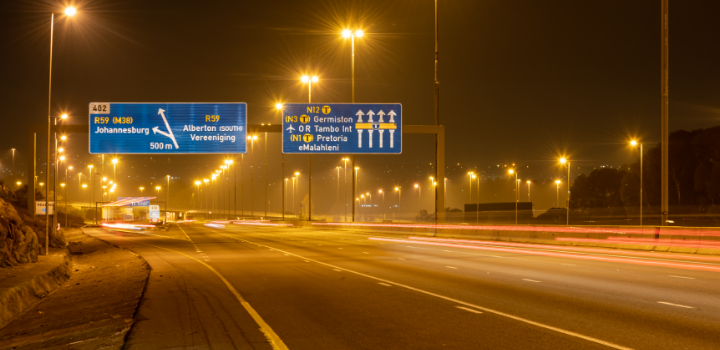How to drive smart and stay safe on the highway

With South Africa's extensive road network, driving on highways is a daily reality for many. However, staying safe at speed requires special skills and extra awareness. Here's how you can navigate highways like a pro while protecting yourself and others.
Highway driving requires unique considerations, like navigating on-ramps and off-ramps, changing lanes and keeping a safe following distance. Here are a few tips to keep in mind the next time you hit the highway.
Stick to the speed limit and watch your following distance
Don't drive over the speed limit! If someone flashes their lights behind you in the fast lane, safely move over to the next lane on the left. Never use the emergency lane as an express lane. You don't want to be one of those drivers.
Driving too slowly can also be hazardous. If you need to reduce your speed or you're a nervous driver, move to the slow lane.
Be aware of the car ahead of you and always keep a two-second following distance. If traffic suddenly slows down, use your hazards to alert other drivers.
On-ramp and off-ramp safety
When approaching on-ramps and off-ramps, choose the appropriate gear for the situation to maintain traffic flow. Allow vehicles merging onto the highway to enter the left lane, or move over to the right if it's clear.
When approaching off-ramps, check your blind spots. If you miss an off-ramp, don't reverse or make a U-turn; simply take the next one.
Check your blind spots and overtake safely
That car that came out of nowhere? It was probably because you didn't check your blind spot. Most drivers have two blind spots that mirrors don't cover - check them by quickly looking 90 degrees to the right and left. Also, do your best to stay out of other drivers' blind spots.
When it comes to overtaking, pay special attention to trucks and motorbikes. When overtaking a truck and you need to move onto the oncoming lane, leave a gap between its back and your front to keep a clear field of vision for oncoming traffic. When coming off the highway at an off-ramp, try not to be the first or second car next to a truck. Otherwise, you might be hit by their axle, as they can take wide turns and cut into the next lane.
Motorbikes are another potential highway hazard. Check your blind spots when changing lanes to make sure no motorbikes are around.
Consider the weather and time of day
Remember that two-second following distance rule? Double this time to four seconds when the roads are wet. If it's rainy, very overcast, or there's poor visibility due to fog or smoke, switch on your headlights - even if it's still daytime.
Night-time driving means you must be extra vigilant. Don't drive too fast, and if oncoming vehicles approach, dim your beams. It's the right thing to do, and they should do the same. Focus on the yellow line on the left of the road and not the approaching lights, as this can blind you for up to seven seconds.
Keep your vehicle safe by doing your Annual MultiPoint check
An important part of staying safe on the highway is making sure your vehicle meets essential safety standards. The Annual MultiPoint check helps Vitality Drive clients do just that.
Simply visit your nearest Tiger Wheel & Tyre store or the Discovery Drive Centre to do your Annual MultiPoint check. They'll check your tyres, windscreen wipers, lights, indicators, hazards, seatbelts, steering, hooter and shocks. If you have a motorcycle, Tiger Wheel & Tyre will check for any missing parts as well as its general condition. Your vehicle's service history will also be checked to see if it's up to date.
Plus, as a Vitality Drive client, you can earn up to 300 Vitality Drive points every month for 12 months when you complete your Annual MultiPoint check.
Highway driving demands constant focus, but by following these tips and making sure your car is safe to be on the road, you can make your journey safer for everyone.